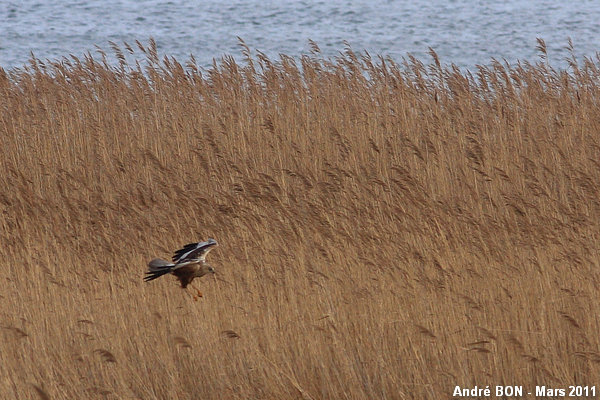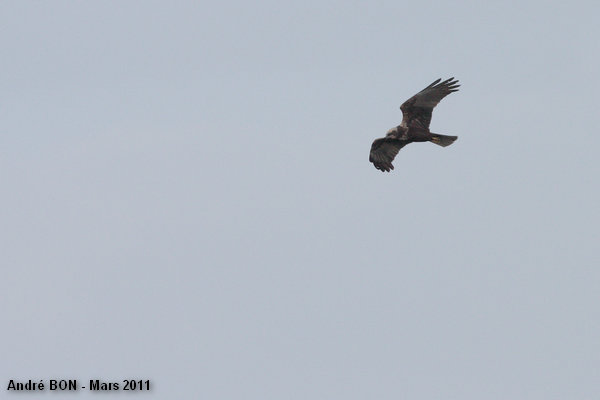

| Western Marsh-harrier (Circus aeruginosus (Linnaeus, 1758)) |


|
|
Scientific name: Circus aeruginosus (Linnaeus, 1758) Common name: Western Marsh-harrier Other names: Eurasian Marsh-harrier French name: Busard des roseaux, Busard harpaye. Order: Accipitriformes Family: Accipitridae Size: Body size: 48 to 56 cm; Weight: Females: 500 to 800 g ; Males: 400 to 650 g; Wingspan: 120 to 135 cm. Habitat: Reed beds bordering mashes, lakes and large rivers. Food: Small mammals, small water birds, snakes, frogs and insects. The Western Marsh-harrier flies slowly, at low height, alternating flapping and gliding. It suddenly stops an drops onto its preys. Nesting: The nest are generally located next to the ground inside reed beds. Males brings materials to females. These last ones lay 3 to 8 eggs early April. Males bring food to females and juveniles during the first weeks. Migration: Northern populations move southwards to winter in the Mediterranean regions or in the regions south of the Sahara. Geographic area: Europe, North Africa, Asia east to Japan, Australia, New Zeeland. |
The Eurasian Marsh-harrier is a rather slender and large harrier bird. It shows angulous wings in flight. Males have a brown upper side and ashy grey wings and tail. Upper side of the head, nape and chest are reddish. The wing tip is black and strongly contrasting with the grey area. The rump is dark on the opposite of other harrier species which show a pale rump. Females are dark brown. Cap, throat and fore edge of the wings are pale yellowish. The eye area is always dark on females while male's head is often hardly contrasted. |
| [To know more about the Western Marsh-harrier] [Next picture] [Top] |

|
Due to bad weather, especially early in the day, I have only found this observation spot a short time before leaving Texel. Several pairs of Western Marsh-harriers were building their nests. About one times every 10 minutes, males were bringing materials to females staying on the ground. |
| [To know more about the Western Marsh-harrier] [Previous picture] [Top] |

|
The 300mm lenses had a too short focal length to take good pictures of the Western Marsh-harriers' going and coming. I was standing on a road side with no specific camouflage. A longer stay (than a single day) on the Texel island and patience would certainly have permitted me to come back with better pictures. Here, the dark stripe on the eye indicate a female. |